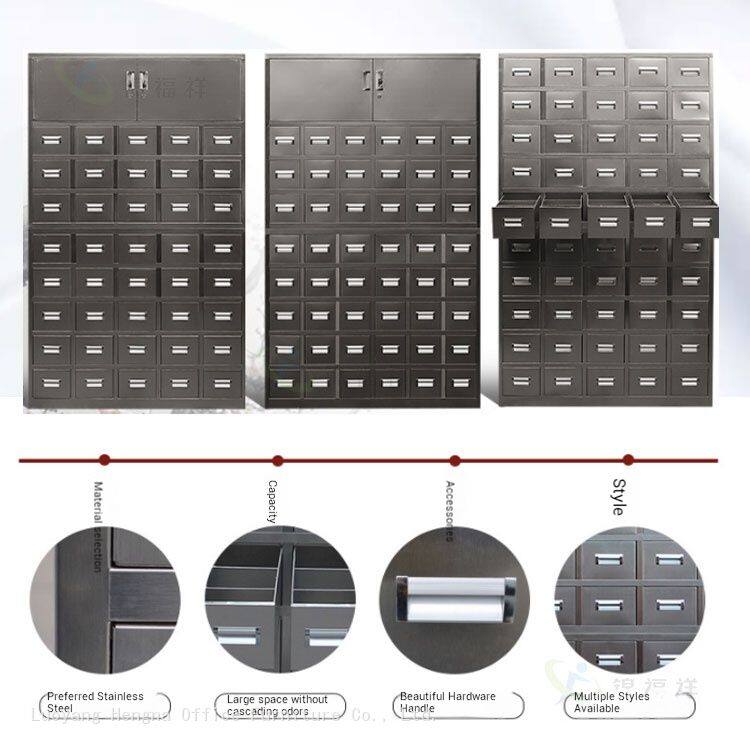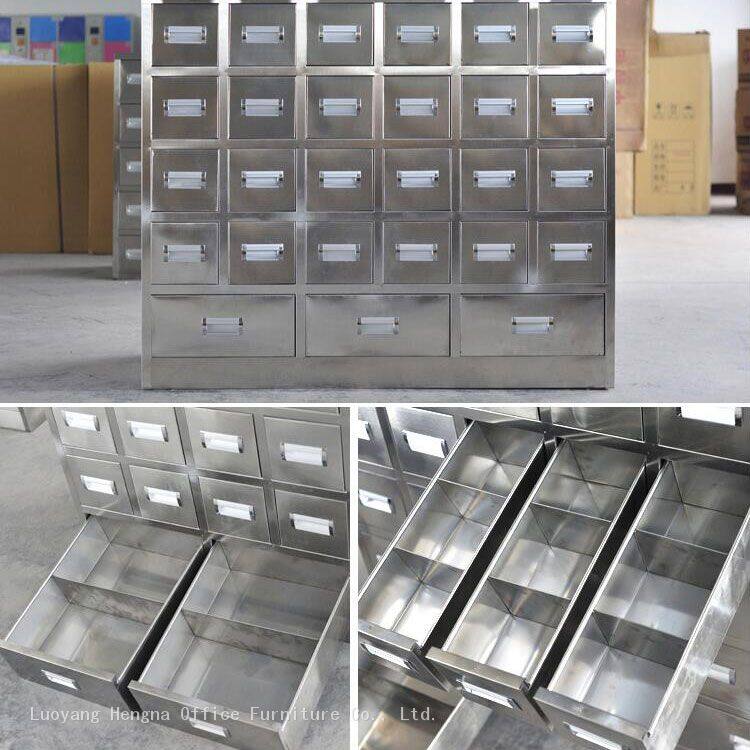-
 Sarah
Hi there! Welcome to my shop. Let me know if you have any questions.
Sarah
Hi there! Welcome to my shop. Let me know if you have any questions.
Your message has exceeded the limit.

How to Organize Dried Herbs Efficiently Using Multi-Drawer TCM Cabinets
2025-10-25 16:48:37
For Traditional Chinese Medicine (TCM) practitioners, herbalists, and wellness enthusiasts, dried herbs are the backbone of holistic healing. But without a systematic organization system, these precious botanicals can quickly become a chaotic mess—leading to wasted time searching for ingredients, cross-contamination risks, and even compromised herb quality. The solution? Multi-drawer TCM cabinets. These specialized storage units are designed to maximize space, preserve freshness, and streamline your workflow. In this guide, we’ll explore how to use them effectively, along with tips to keep your herbal inventory organized and accessible.
Why Multi-Drawer TCM Cabinets Are a Game-Changer for Herb Storage
Dried herbs require specific conditions to maintain their potency: they need to be kept dry, cool, and away from light and odors. Multi-drawer cabinets address all these needs while adding convenience. Here’s why they’re superior to other storage options:
Optimal Airflow & Moisture Control: Each drawer is typically made of stainless steel or food-grade plastic, which prevents moisture buildup—critical for preventing mold or mildew. Many models feature ventilation holes or sealed drawers to balance airflow without exposing herbs to humidity.
Space Efficiency: Unlike open shelves or bins, multi-drawer cabinets stack vertically, making them perfect for small clinics or home apothecaries. You can store hundreds of herbs in a compact footprint—no more cluttered counters or overflowing boxes.
Odor Isolation: High-quality cabinets (like those made from preferred stainless steel) have sealed compartments that prevent cross-contamination of scents. For example, pungent herbs like garlic or ginger won’t transfer their aroma to delicate flowers like chrysanthemum.
Easy Access & Visibility: Drawers pull out smoothly, so you can see and reach every herb without digging through piles. This saves time during busy clinic days or when preparing formulas.
Step-by-Step Guide to Organizing Your Herbs in a Multi-Drawer Cabinet
Ready to transform your herb storage? Follow these steps to set up your cabinet like a pro:
1. Sort Herbs by Category (Not Alphabet!)
Grouping herbs by function or type makes it easier to find what you need. Common categories include:
Roots: Ginseng, astragalus, dandelion root
Leaves: Mint, mulberry leaf, eucalyptus
Flowers: Chrysanthemum, honeysuckle, rose buds
Fruits/Seeds: Goji berries, black sesame seeds, longan
Minerals/Animal Products: Oyster shell, deer antler (note: some animal products may have ethical or legal restrictions—check local regulations).
Pro Tip: Use color-coded labels or stickers on drawers to denote categories (e.g., green for leaves, brown for roots). This visual cue speeds up retrieval.

2. Label Every Drawer Clearly
Even if you think you’ll remember what’s inside, labels are non-negotiable. Include:
Herb Name: Both Chinese (e.g., , huáng qí) and English (astragalus).
Part Used: Root, leaf, flower, etc.
Quantity: “100g” or “500g” to track inventory.
Expiration Date: Dried herbs last 1–2 years, but quality declines over time. Rotate older stock to the front.
Example Label: (Astragalus Root) | 200g | Expires: 12/2025
3. Use Dividers or Trays for Small Quantities
If you have tiny amounts of rare herbs (e.g., snow lotus or cordyceps), add dividers or small trays within drawers. This keeps them from getting lost among larger quantities and protects fragile petals or seeds.
4. Store Herbs in Airtight Containers First
Before placing herbs in the cabinet, transfer them from original packaging to airtight glass jars or food-grade plastic bags. This adds an extra layer of protection against moisture and pests. Label each container clearly, then place it in the corresponding drawer.
5. Reserve Top Drawers for Frequently Used Herbs
Keep your most popular herbs (e.g., ginger, licorice root, or peppermint) in the top drawers for easy access. Less frequently used items (like obscure mushrooms or exotic barks) can go in lower drawers.
6. Maintain Consistency
Once you’ve set up your system, stick to it! Put herbs back in their designated spots after use, and update labels when you replenish stock. Consistency is key to avoiding future chaos.

Advanced Tips for Maximizing Efficiency
Want to take your organization to the next level? Try these hacks:
Use a “First-In, First-Out” (FIFO) System: Place newer herbs behind older ones in each drawer. This ensures you use older stock first, reducing waste.
Add a Inventory Log: Keep a spreadsheet or notebook near your cabinet to track what you have, when you bought it, and when you need to reorder. Digital tools like Google Sheets or TCM-specific apps can make this easier.
Label Drawers with Symbols: If you work with non-English speakers or prefer visuals, use symbols (e.g., a leaf for “leaves,” a root for “roots”) alongside text. This is especially helpful in busy clinics.
Choosing the Right Multi-Drawer Cabinet for Your Needs
Not all cabinets are created equal. When shopping, consider these factors:
| Feature | Importance | Options |
|---|---|---|
| Material | High | Stainless steel (durable, rust-resistant) or food-grade plastic (lightweight, affordable) |
| Size | Medium | Tall/narrow (saves floor space) or wide (more drawer capacity) |
| Drawer Features | High | Smooth-gliding, removable trays, secure latches |
| Style | Low | Decorative hardware, various finishes (matte black, silver, wood grain) |
Organizing dried herbs in a multi-drawer TCM cabinet isn’t just about neatness—it’s about respecting the herbs’ healing power and optimizing your practice. By following the steps above, you’ll save time, reduce stress, and ensure your herbs stay potent and safe. Whether you’re a seasoned practitioner or a home herbalist, a well-organized cabinet is an investment in your craft—and your clients’ health.
Start today: clear out a corner, sort your herbs, and transform your space into a calm, efficient apothecary. Your future self (and your patients) will thank you!
Note: Always follow local regulations regarding the storage and use of TCM herbs, especially those derived from endangered species or restricted materials.
Tags: Multi-Drawer TCM Cabinets, Organize Dried Herbs Efficiently Using Multi-Drawer TCM Cabinets

